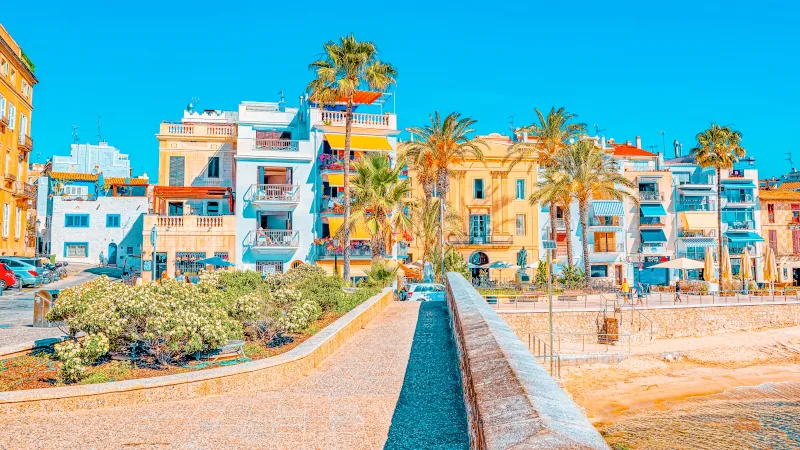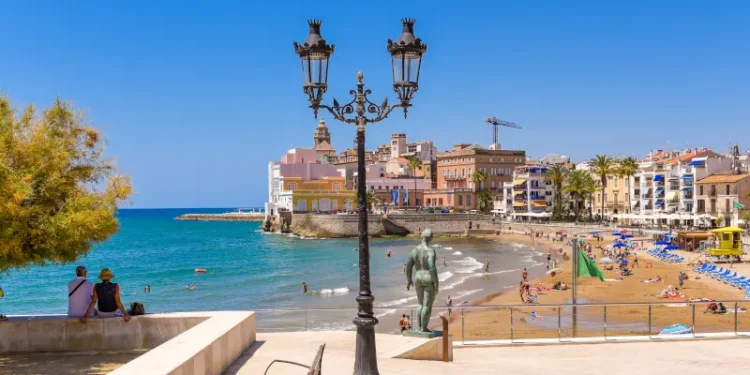A 35-minute train ride transports you from the hustle and bustle of Barcelona to the pretty seaside town of Sitges.
Well-to-do Catalans, writers, artists, and poets have been summering in this part of Spain’s Costa del Garraf (home coast) since the 19th century.
Back then, as trade routes opened up with America, many locals made their way Stateside where fortunes were made. They invested much of their wealth back into their hometown and still today during Sitges’ Festa Major giant figures with painted papier maché heads— known as capgrossos, literally “big heads”—are made to represent these beloved Americanos.
In the 1960s, Sitges became the base of Spain’s counterculture movement, a liberal kickback at the ultra-conservative Franco regime. A film festival was established here in 1968 and still runs today. Indeed, there’s an unmistakable old Hollywood feel to much of the town.
Through the years, Sitges popularity has continued to grow with visitors both from within Spain and overseas. Of the 32,000 or so people who call Sitges home today, around a third are expats.

Sitges has much to recommend it… friendly locals, a lively nightlife, 17 beaches, as well as festivals and carnivals throughout the year. It’s hugely popular with the LGBTQ+ community… Rainbow flags abound, there’s an annual pride parade, loads of gay bars, even gay beaches—the main one being
Bassa Rodona
It’s also popular with solos and families thanks to its array of amenities and entertainment options, plus it’s very safe.
The charming old town is packed with cafés and restaurants… the perfect place to grab a table on the sidewalk, order a cold drink, and watch the world go by.
Along the seafront there’s pop-up markets, parks, and homes with enviable views. Reminders of Sitges’ rich history abound too, from 18th century cannons that blasted pirates from her shores to a celebration of past residents, the Bacardi family.
Facundo Bacardi, creator of Bacardi rum, was born in Sitges in 1814. The family later moved to Cuba where our friend Facundo began mixing drinks, but the brand’s logo—a bat, which in Catalonia symbolizes good fortune—speaks to his Spanish roots.
Sitges offers a good selection of shops, supermarkets, and other conveniences as well as a fun-loving expat community to connect with—the majority of whom
are from the U.K., which eliminates the language barrier, too.
Furnished, one-bedroom rental apartments in Sitges start at 1,000 euros a month. Double your budget to 2,000 euros a month and you can settle into a three-bedroom, sea-view duplex with a terrace and balcony.
Property for sale in Sitges starts around the 185,000-euro mark, though you can find bargains if you’re happy with a fixer-upper.
If you’re looking for easy expat living in a fun seaside town then Sitges is definitely worth a look.
Sincerely,
Victoria Harmer
Editor, Overseas Opportunity Letter












